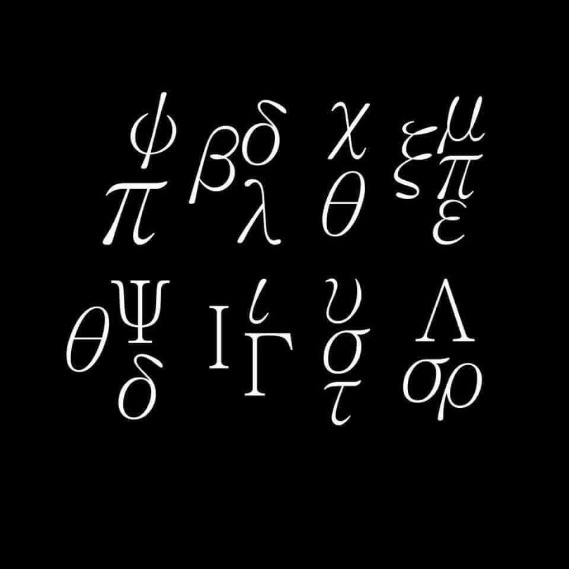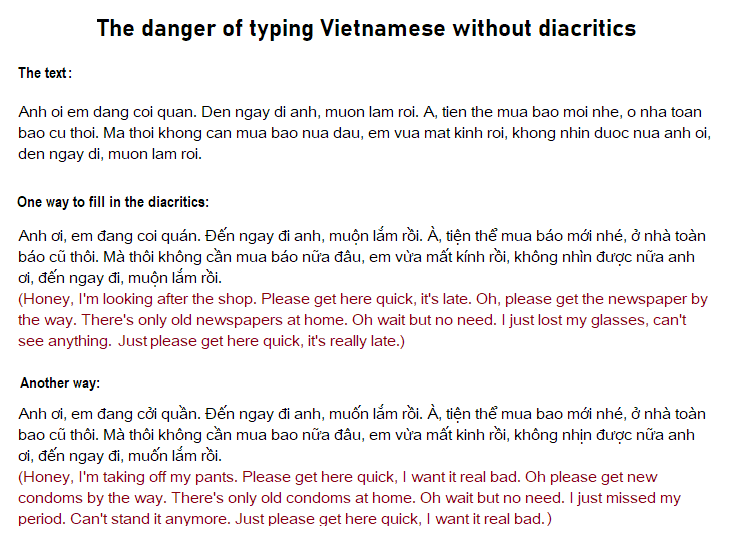Archive for Writing systems
On the invention of writing in Egypt and China
The next SCRIBO guest will be John Baines (Oxford), on the invention of writing in Egypt and China, with the title:
Silvia Ferrara <silvia.ferrara@gmail.com>
SCRIBO Seminar (INSCRIBE ERC Project, Bologna)
[h.t. Joe Farrell]
A Northeastern topolectal morpheme without a corresponding character
A favorite expression of Dōngběi rén 東北人 ("Northeasterners") is zhóu. It means "mulish". The adjective zhóu describes a person who is stubborn, but not in an obnoxious, offensive way, rather in a cute, amiable, charming, or naive manner.
Despite its relatively high frequency in Northeastern speech, there is no known Sinograph / Chinese character that corresponds to this morpheme. It is customarily or conventionally written as "zhóu 軸" ("axis; axle"), but that is only a borrowed makeshift.
Read the rest of this entry »
NYC crotch
News you can use, from The Forward: "Etsy vendor who doesn’t know Yiddish accidentally sells 'NYC crotch' face mask" (Aiden Pink, May 26, 2020).
A vendor on the e-commerce site Etsy wanted to sell facemasks that said “NYC Strong” in Yiddish – but the final product said “NYC Crotch” instead.
The vendor Tees Go Bling, based in Wyoming, offers dozens of glittery facemask designs for sale, including images of the American flag and the Disney logo, as well as slogans of support for various cities like “Detroit Strong” and “Chicago Strong.”
The trouble began when they tried to sell a “NYC Strong” mask using the Yiddish word for strong, shtark. But while Yiddish is written right-to-left, like Hebrew, the Yiddish letters in shtark [שטאַרק] were printed left-to-right [קראַטש], meaning that anyone looking at it the correct way would read shtark backwards – as “crotch.”
Read the rest of this entry »
"Was he reading Hanzi, or Hanyu Pinyin?"
A commenter to this post, "Matthew Pottinger's speech in Mandarin" (5/9/20) posed the questions in the title. These are interesting questions that raise important issues.
Since I don't know Matthew Pottinger, I am unable to say for sure what he was reading, whether it was Hanzi, Hanyu Pinyin, or something else. The reason I say "something else" is because his teacher, Perry Link, was a strong advocate of Gwoyeu Romatzyh spelling, aka GR or the National Language Romanization system, so it may have been that.
For those who are not familiar with it, GR is a kind of tonal romanization in which the tones of words are spelled with letters. It is difficult to learn (though much less difficult than characters, of course!), but it is very effective in imprinting the tones of words in the heads of learners. Indeed, many of the best foreign speakers of Mandarin learned the language via GR, and they include Perry Link and Tom Bartlett.
Read the rest of this entry »
Ladle Rat Rotten Hut, Emojis and coded communication in Shanghai
Look everyone! it's a post about language in China by not-Victor! :)
I just had to drop everything and write this post while I was listening to the latest Reply-All podcast, this week consisting of a series of phone interviews with people around the world about the experience of the COVID-19 pandemic in their area. The first interview was with Justine from Shanghai, and she was talking about ways people were working around censorship in talking about…
…uh oh I suddenly realize I may be doing a disservice to the Chinese public by posting about this, so I won't go into all the detail I intended. Anyway, the basic idea is that folks were using homophonic transliteration with emojis to get around censorship of certain stories about the epidemic there. You can listen to the podcast here; the relevant bit is between minutes 4:40 and 6:15.
If you can imagine it, this would be like trying to parse "Little Red Riding Hood" from emojis like💡💯🐀✍️👱♂️. Leaving comments open to see if anyone can figure out what homophonic transliteration words I intend for that sequence. First prize is a disinfected plastic cup with logo from the Language Log water cooler stash delivered by drone sometime in 2022.
It's probably worth noting that this idea of communicating via pictures of sound-alikes is basically the actual honest to god origin of phonetically based writing systems. Also worth noting that this way of repurposing symbols to represent sounds of another expression has a long history particularly in Chinese and related languages, whose linguistic features mean that you often have lots of homophones and near-homophones, and whose logographic writing systems probably lend themselves to that kind of graphemic/phonemic cross-indexing during lexical lookup. (Someone must be studying that, right? ) So you get a lot of punning and double-entendres in Chinese writing, if I understand rightly.
If the idea of homophonic transliteration is new to you, you could get in the wayback machine and check out this archival LL post from simpler times, here.
Wishing all my fellow humans the very best from a living room in Arizona!
Take stalk of: thoughts on philology and Sinology
In a note I was composing to some friends, I just wrote "let's take stalk of…", was surprised and smiled, corrected myself, and continued writing.
But then I paused to reflect….
Read the rest of this entry »
The many varieties of Japanese regional speech
Anyone who learns Standard Japanese and then travels around outside of the Tokyo area will quickly come to realize how distinctive and numerous are the local forms of language once one leaves the metropolitan region of the capital.
Some interesting aspects of this phenomenon are presented in a new article in nippon.com, "Linguistic Treasures: The Value of Dialects", by Kobayashi Takashi, professor at the Center for the Study of Dialectology, Tōhoku University, who specializes in dialects and the history of Japanese.
Read the rest of this entry »
Sia suay (or xia suay): a Hokkien expression in Singapore English
Here at Language Log, we are quite familiar with Singapore English, which comes in two registers: Singapore Standard English (SSE) and Singapore Colloquial English (Singlish). The term we are discussing today can be used in either register.
This multipurpose expression is featured in connection with the COVID-19 crisis in two recent articles in The Independent:
I
"'Sia suay should be the word of the year…' Netizens take a dig at Chan Chun Sing now that panic buying is happening in many countries
Many netizens went online to say that those words had become a kind of catch phrase. It implies something that is a disgrace or an embarrassment", by Anna Maria Romero (3/5/20)
II
"'Let’s not xia suay again, Singaporeans.' Netizens respond to Chan Chun Sing’s assurance that the country has enough food supplies
Many people commented thanking him for issuing the reassuring update in such a quick manner and called for Singaporeans to stand united at this time", by Anna Maria Romero (3/17/20)
Read the rest of this entry »
"Onion" in Persian, Turkic, Mongolian, Manchu, Dungan (northwest Mandarin), and Indic
By chance, I came across this interesting Uyghur word for "onion" that derives from Persian:
Uyghur پىياز (piyaz), from Persian پیاز
(source)
It's piyoz (пиёз) in Uzbek also, which is closely related to Uyghur.
Read the rest of this entry »
"Grapholinguistics"
According to Yannis Haralambous, "Grapholinguistics, TEX, and a June 2020 conference in Paris", TUGboat 2020:
Grapholinguistics is the discipline dealing with the study of the written modality of language.
At this point, the reader may ask some very pertinent questions:“Why have I never heard of grapholinguistics?” “If this is a subfield of linguistics, like psycholinguistics or sociolinguistics, why isn’t it taught in Universities?” “And why libraries do not abound of books about it?”
Read the rest of this entry »
Northernmost runic finds in the world
Just coming across this now:
Report from The Siberian Times (7/4/18), "Boy, 11, finds ‘1,000 year old message’ written in runes on pendant made of mammoth bone":
Read the rest of this entry »



